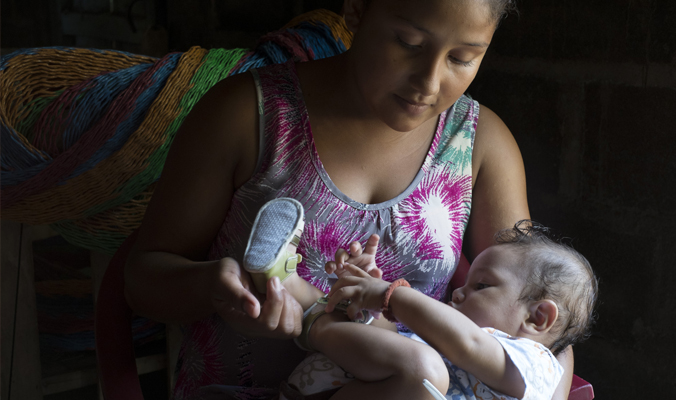
This low cost, 3D-printed point-of-care device can be attached to a smartphone and using a drop of blood, the result can be read from the smartphone within a minute. Approximately 2 billion people worldwide, mostly preschool children and pregnant women, are affected by anaemia. “Anemia is a very prevalent condition in developing countries even though it is easily treated with iron supplements or vitamins and can be prevented with a healthy diet. Often in these developing countries people will have much easier access to smartphones than they will to doctors and trained medical professionals.”
Allows for the creation of more effective screening programs for IDA in prenatal and postnatal programs which have historically been hampered by the lack of simple, safe, accurate, low-cost hemoglobin testing tools, now available with this device
Microfluidic device enables blood testing on a microchip or small slide, making it less expensive to manufacture and ship, and in the case of smartphone-based devices, easier to use by those without medical training.
Aligns with Nestle Health Science’s shift towards diagnostics and early detection / prevention
Targets key emerging market consumer need and alignes to strategic theme of addressing under-preparedness of mums
Concept Stage - Under development at Kansas State University
Team is currently testing patient samples, which will allow them to further improve and optimize their device for real-world diagnostic applications.
They have also filed an invention disclosure for the proof-of-concept device with the Kansas State University Research Foundation
Nestle Nutrition
| Incorporated | Raised Money | Patents | Prototype |
|---|---|---|---|
Approximately 2 billion people worldwide, mostly preschool children and pregnant women, are affected by anaemia.
Iron-deficiency anaemia (IDA) in children has been associated with impaired cognitive performance, motor development, coordination, and language development.
In developing countries, 42% of children less than 5 years of age and 53% of children from 5 to 14 years of age are anaemic
http://olathe.k-state.edu/about/news/2016/feb16/anemia22516.html